Persimmon—One Versatile and Healthy Fruit!
Were you aware that October is National Apple Month, National Pickled Peppers Month, National Popcorn Month, National Spinach Lovers Month, and National Persimmons Month? Me neither.
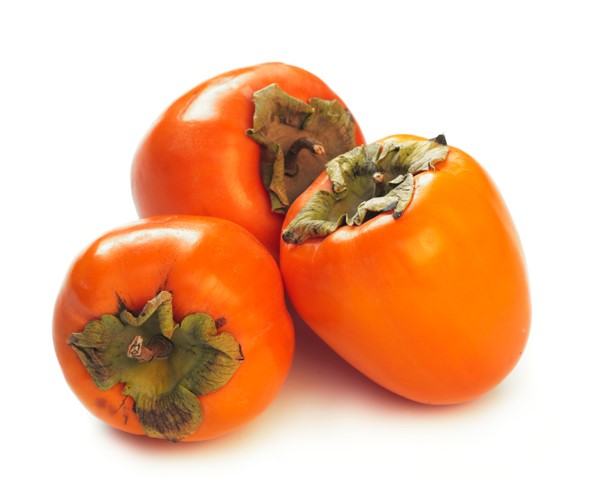
While I like apples, peppers, popcorn, and spinach, the persimmon intrigues me. Maybe you, too? Here’s what I didn’t know: The persimmon fruit ranges from golden yellow to bright orange. Originating in the Far East, it is round or oval, very flavorful, and smooth textured.
Persimmon fruit is moderately high in calories (provides 70 calories/100 g) but very low in fats. Its smooth textured flesh is a very good source of dietary fiber. 100 g of fresh fruit holds 3.6 g or 9.5% of recommended daily intake of soluble and insoluble fiber.
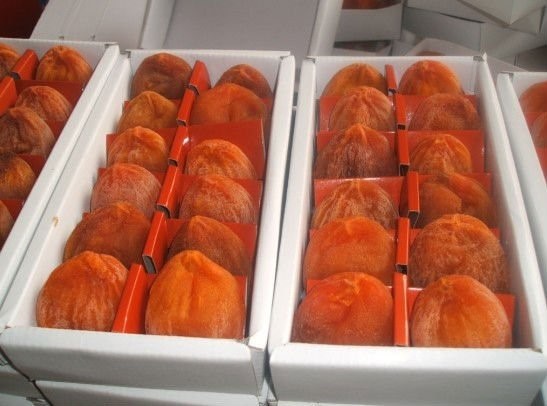
Persimmon can be consumed raw, dried, or cooked. Raw fruit can be cut into quarters or eaten wholes as you would an apple. The dried has features similar to a dried apricot. Persimmon texture ranges from firm to mushy and is very sweet, and there are lots of things you can do with them:
§ Use dried or raw persimmon in cookies, cakes, muffins, puddings, salads and as a topping in breakfast cereal.
§ Make a delicious pudding using fresh persimmon (recipe follows).
§ Or just eat them dried for a delicious and health snack.
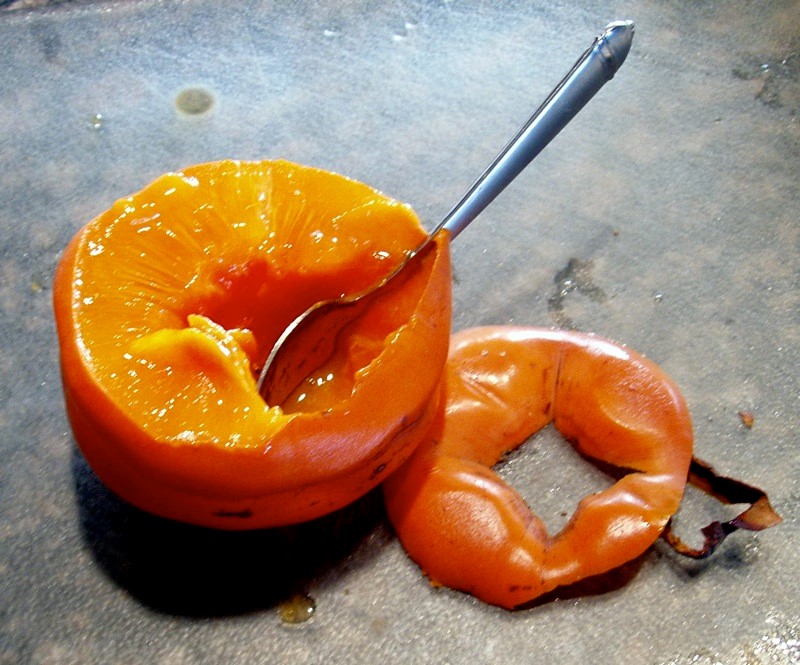
It’s not just delicious, it’s also loaded with several health promoting nutrients. For instance, consider:
§ Persimmon contains health-benefiting flavonoid poly-phenolic anti-oxidants such as catechins andgallocatechins in addition to having an important anti-tumor compound, betulinic acid. Catechins have anti-infective, anti-inflammatory and anti-hemorrhagic (prevents bleeding from small blood vessels) properties.
§ Some other abundant anti-oxidant compounds are vitamin-A, beta-carotene, lycopene, lutein, zea-xanthin and cryptoxanthin. Together, these compounds work as protective scavengers against oxygen-derived free radicals and reactive oxygen species (ROS) that play a role in aging and various disease processes.
§ Zea-xanthin, an important dietary carotenoid, is selectively absorbed into the retinal macula lutea in the eyes where it provides antioxidant and protective light-filtering functions. It helps prevent "age-related macular degeneration" (ARMD).
§ Persimmons are also a great source of vitamin-C, another powerful antioxidant that helps the body develop resistance against infectious agents and scavenge harmful, pro-inflammatory free radicals.
§ It’s also high in many valuable B-complex vitamins such as folic acid, pyridoxine (vitamin B-6), and thiamin.
§ Fresh and dry persimmon also contains healthy amounts of minerals such as potassium, manganese (15% of DRI), copper (12% of DRI), and phosphorus. Manganese is a co-factor for the enzyme, superoxide dismutase, which is a very powerful free radical scavenger. Copper is a co-factor for many vital enzymes, including cytochrome c-oxidase and superoxide dismutase (other minerals function as cofactors for this enzyme are manganese, and zinc). Copper is also required for the production of red blood cells.
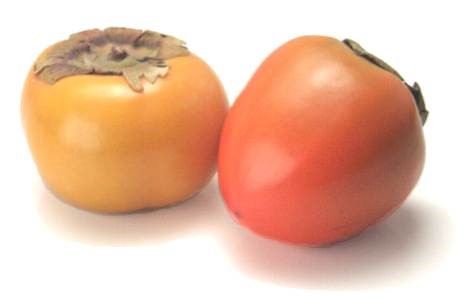
There are two varieties in the persimmon family. The Astringent variety (the dark orange, acorn-shaped) and the Non-astringent variety (the light orange, tomato-shaped). The Astringent (commonly known as hachiya) variety is generally harvested while the fruit is hard, but fully matured. On the other hand, Non-astringent types (known as fuyu) can be ready for harvesting when they achieve full-color, and slightly soft in consistency.
Astringent persimmons usually continue to ripen at room temperature. You want to select fresh fruits featuring bright yellow-orange color without any surface bruises or cuts on them. Dried persimmons are starting to show up more and more in whole food markets.
Mature, hard astringent persimmons can be stored inside the refrigerator for several months. Non-astringent varieties have short shelf span and can be stored for only a few days at room temperature.
Now as promised, here’s a 5 star recipe for persimmon pudding my gourmet neighbor found on food.com that she loves. See what you think:
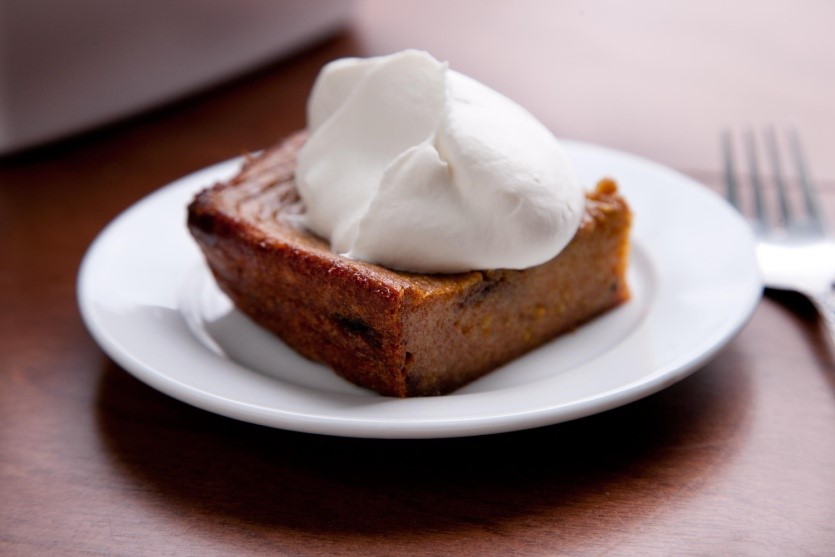
PERSIMMON PUDDING (serves 9)
1 cup very ripe hachiya persimmon pulp (this is the Astringent variety)
¾ cup sugar
3 eggs, beaten
1 cup flour
1 tsp baking powder (Rumford’s is aluminum-free)
½ tsp nutmeg
1 cup milk
½ cup butter, melted
½ tsp cinnamon
Combine persimmon pulp with sugar. Beat in eggs. Mix in milk, then butter. Sift or stir flour with baking powder, cinnamon, nutmeg. Mix with persimmon mixture. Pour batter into a well greased 9-inch square cake pan. Bake in a 315-325°F oven for approx 60 minutes or until knife comes out clean.
- www.healthiestfoods.com
- www.21food.com
- www.cloudforest.com
- www.foodsubs.com
- www.chowhound.com
 Alice Osborne
Alice Osborne
Weekly Newsletter Contributor since 2006
Email the author! alice@dvo.com
